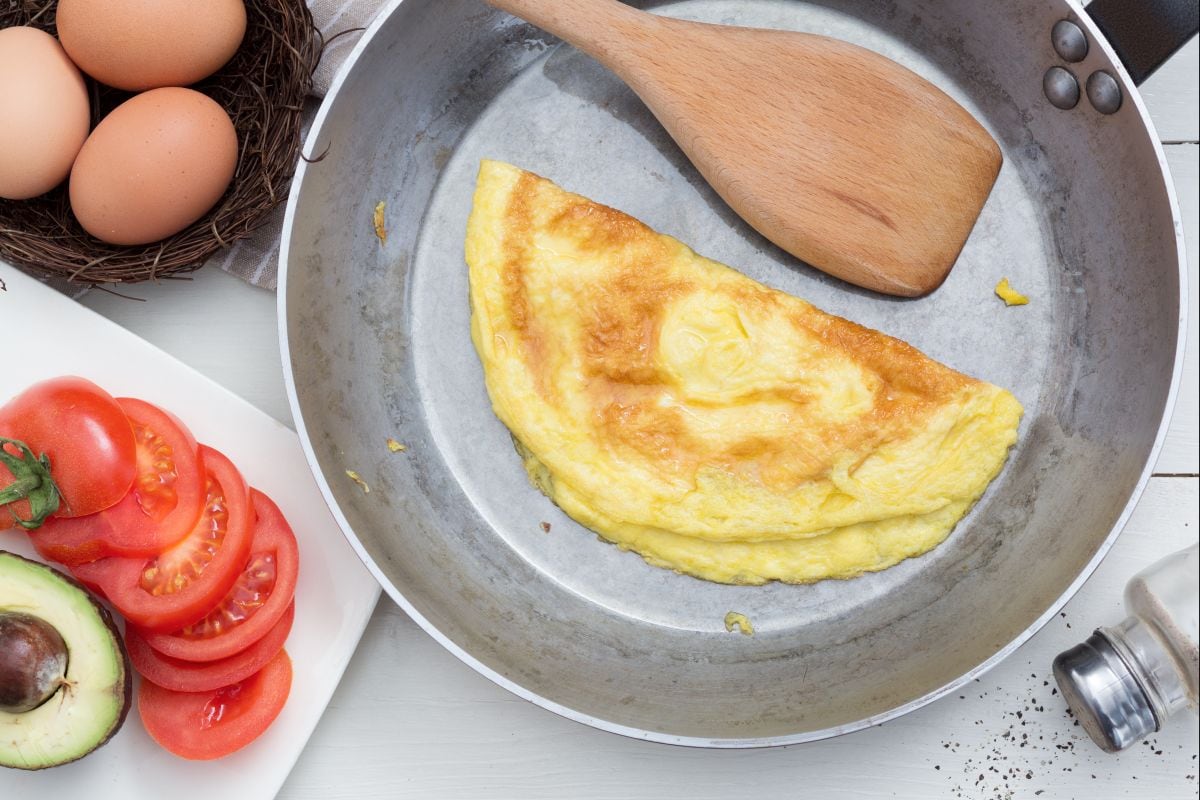Fried egg yolk
- Easy
- 30 min

The omelette is a dish of French origin, which should not be confused with the classic Italian frittata. It may seem simple to prepare, and actually an omelet is made in just a few minutes, but this recipe can be quite tricky! Today in the Giallozafferano kitchen we had the honor of hosting Cristina Bowerman, a great chef who explained to us how to make the perfect omelet! Starting with the choice of eggs, which must be very fresh, in fact only a superior quality ingredient can transform a simple dish like an omelet into something really special! We then proceed to the cooking, which must be done over a low flame: in fact, by cooking slowly, the egg will be at its softest. But be careful, despite all our advice, you will have to rely on your good judgment and understand when it's the right time to fold the omelette in a crescent shape! That's how you can obtain a light uniform golden color on the outside and a creamy ("drooly") inside. Fill your omelette with cheese or cold cuts, maybe you can also try a vegetable omelette! Serve your omelette with a fruit juice for a healthy and nutritious breakfast! A meal that can give you the right boost all day long... wholesome and complete!

To prepare the omelettes, first break the eggs into a bowl 1. Add the milk 2 and a pinch of salt 3.

Whisk together the eggs 4 and the milk 5 to blend thoroughly. They will be ready when the mixture falls off the whisk in a stream 6.

Heat a pan and add a drizzle of extra virgin olive oil. As soon as it is hot, pour the egg mixture in the pan 7; to see if the oil is hot enough, try pouring a few drops in first. Cook the omelette over medium-low heat: the egg will remain softer if cooked slowly. The outside should be golden, but not too much, as soon as it starts to set on the edges, cover it with a lid 8. If the temperature seems to be too high, move the pan away from the heat for a few seconds, with the lid on. Swirl the pan gently to prevent the omelette from resting on the same spot for too long. As soon as the omelette is soft on the surface ("drooly") 9

and when lifting the edge with a spatula the bottom is a golden color 10, fold the omelette in a crescent shape 11, leave it a few more seconds in the pan and serve your omelette hot 12. Simple or accompanied by seasonal vegetables, it will make an excellent second course. With crispy bacon, it will help complete a perfect continental breakfast!